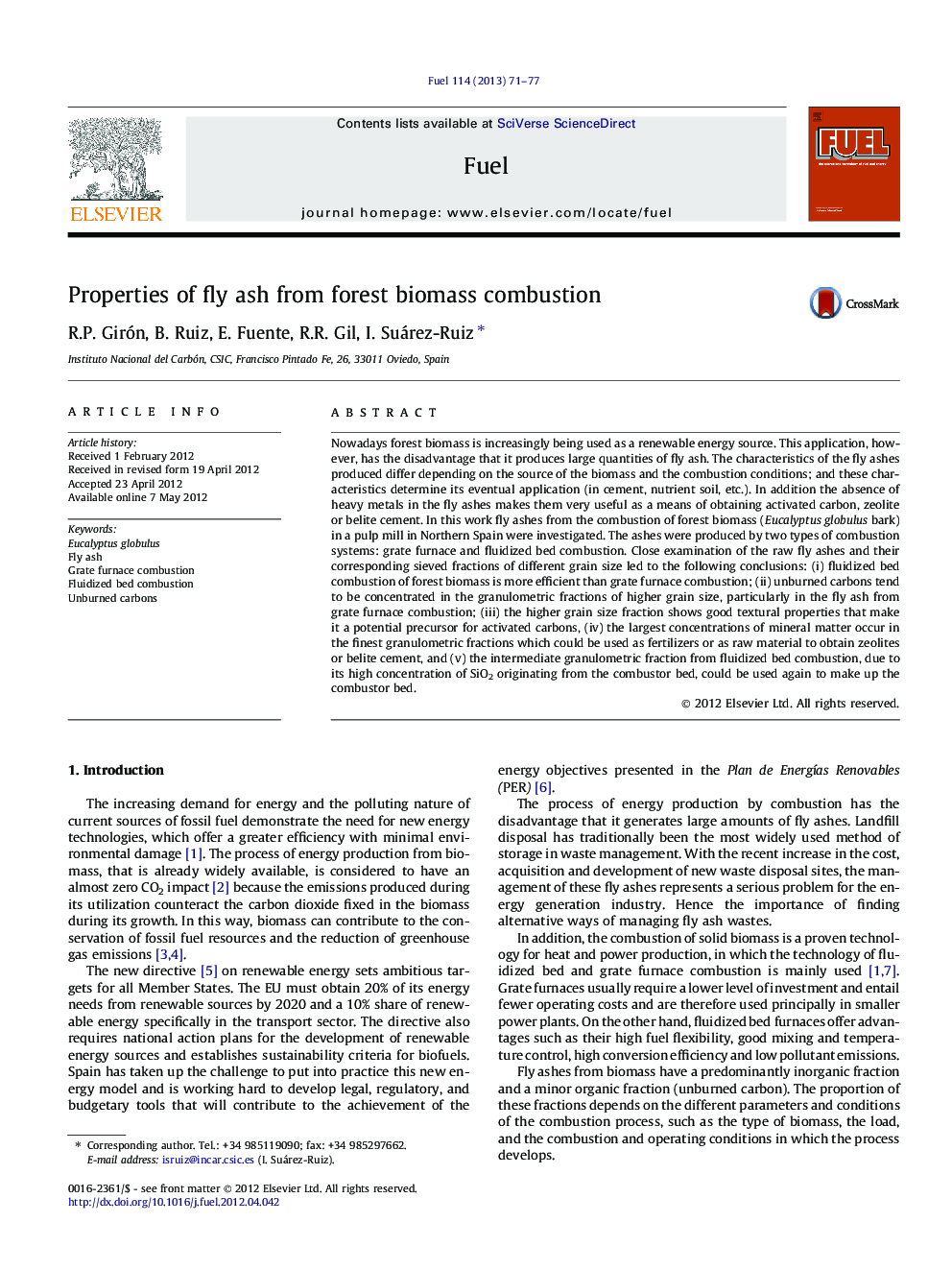| Article ID | Journal | Published Year | Pages | File Type |
|---|---|---|---|---|
| 206280 | Fuel | 2013 | 7 Pages |
Nowadays forest biomass is increasingly being used as a renewable energy source. This application, however, has the disadvantage that it produces large quantities of fly ash. The characteristics of the fly ashes produced differ depending on the source of the biomass and the combustion conditions; and these characteristics determine its eventual application (in cement, nutrient soil, etc.). In addition the absence of heavy metals in the fly ashes makes them very useful as a means of obtaining activated carbon, zeolite or belite cement. In this work fly ashes from the combustion of forest biomass (Eucalyptus globulus bark) in a pulp mill in Northern Spain were investigated. The ashes were produced by two types of combustion systems: grate furnace and fluidized bed combustion. Close examination of the raw fly ashes and their corresponding sieved fractions of different grain size led to the following conclusions: (i) fluidized bed combustion of forest biomass is more efficient than grate furnace combustion; (ii) unburned carbons tend to be concentrated in the granulometric fractions of higher grain size, particularly in the fly ash from grate furnace combustion; (iii) the higher grain size fraction shows good textural properties that make it a potential precursor for activated carbons, (iv) the largest concentrations of mineral matter occur in the finest granulometric fractions which could be used as fertilizers or as raw material to obtain zeolites or belite cement, and (v) the intermediate granulometric fraction from fluidized bed combustion, due to its high concentration of SiO2 originating from the combustor bed, could be used again to make up the combustor bed.
